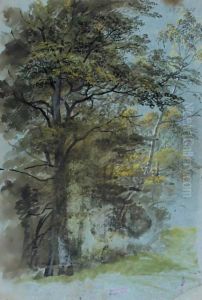Johann Jakob The Younger Dorner Paintings
Johann Jakob The Younger Dorner was a German painter, born on March 11, 1775, in the town of Ehingen in Southern Germany. He was known for his work in the Neoclassical and Romantic styles. Dorner was a part of a family with a strong artistic tradition; his father, Johann Jakob Dorner the Elder, was also a painter, and this familial environment influenced his early education and career choice.
Initially trained by his father, Dorner the Younger later continued his studies at the Academy of Fine Arts Munich, where he was significantly influenced by the Neoclassical ideals of harmony, clarity, and strong linear design. His work often focused on religious and mythological subjects, executed with precision and attention to detail. He gained considerable success as a painter of altarpieces and religious imagery, which were in high demand during his lifetime, especially for churches in Southern Germany and Austria.
Throughout his career, Dorner also interacted with other artists and intellectuals of his time, which further shaped his artistic development. He worked on various large-scale projects, including frescoes and court commissions, which added to his reputation as a skilled and versatile artist.
Dorner's works are characterized by their vibrant use of color and a keen sense of composition, balancing dramatic narrative content with a clear, organized pictorial structure. As Romanticism gained traction, he adapted his style to include more emotion and dynamic forms, though he never fully abandoned his Neoclassical roots.
Johann Jakob The Younger Dorner died on December 21, 1852, in Munich. His legacy includes not only his contributions to the art of his own era but also his influence on subsequent generations of artists. His works remain in various collections and continue to be studied for their blend of Neoclassical structure and Romantic sensibility.
